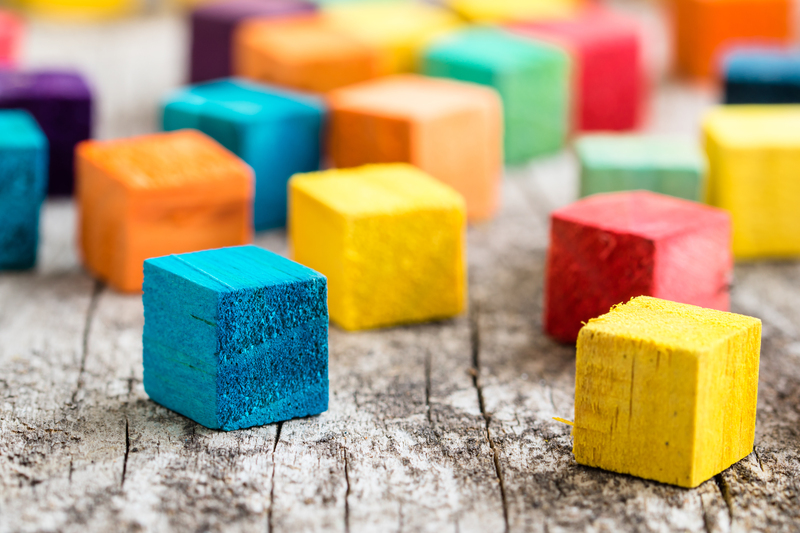Smart Strategies for Sustaining Clutter-Free Spaces After Tidying
Maintaining an organized and clutter-free space is a rewarding achievement, but as many have experienced, it's keeping those spaces tidy that presents the biggest challenge. Whether you've conquered messy rooms with the KonMari Method, a deep spring clean, or another decluttering system, the journey doesn't end once the clutter is gone. The real transformation happens when you implement smart strategies for sustaining clutter-free spaces after tidying. In this comprehensive guide, we'll explore actionable steps, habits, and tools that will help you preserve the order and tranquility you've created in your home or office.

Why Sustaining Clutter-Free Spaces Matters
Clutter-free environments are more than just attractive. Studies show that disorderly spaces can cause stress, reduce productivity, and even disrupt sleep patterns. By adopting long-term organizational solutions, you support both your physical and mental well-being. A tidy space encourages creativity, peace, and efficiency, making it worthwhile to invest time in sustaining its neatness.
Benefits of Maintaining a Clutter-Free Environment
- Reduces stress and anxiety: Visual chaos overwhelms the mind.
- Boosts productivity: Easy access to what you need saves time.
- Improves overall cleanliness: Fewer items mean less dust and easier cleaning.
- Enhances mental clarity: A new sense of order calms and focuses the mind.
- Saves money: Avoid duplicate purchases by knowing where everything is.
Key Principles for Maintaining Clutter-Free Spaces
When it comes to sustaining an organized environment, consistency is the foundation. Below are core principles that should guide your post-tidying routines:
- Adopt a "one in, one out" rule: For each new item you acquire, remove one you no longer need.
- Designate homes for all belongings: Items should have specific, logical storage places.
- Practice mindful buying: Avoid impulsive purchases by asking if you truly need or love something.
- Commit to daily 'tidy time': Spend a few minutes each day restoring order.
- Prioritize accessibility: Store items you use frequently in easy-to-reach places.
1. Schedule Regular Mini Decluttering Sessions
Sustaining a clutter-free space isn't about overhauling your home repeatedly. Instead, schedule short, routine check-ins--weekly, bi-weekly, or monthly--to ensure things stay under control. Focus on high-traffic areas and commonly cluttered zones, like countertops, entryways, and desktops. These brief sessions will prevent clutter from piling up and keep everything manageable.
2. Create and Use Organization Systems
The secret to maintaining organization is effective systems. This could include:
- Labeled bins and baskets for sorting items in closets, kitchens, and bathrooms.
- Hooks and wall organizers to utilize vertical space for coats, bags, and accessories.
- Drawer dividers to separate small items and keep everything visible.
- Digital tools (like inventory apps or reminders) for keeping track of what you own.
Organization systems create structure and help every household member know where items belong.
Smart Habits to Keep Clutter at Bay
Your commitment to maintaining a tidy space should become habitual. Here are practical daily and weekly habits to integrate into your routine:
Establish Catch-All Zones (But Don't Let Them Overflow)
It's natural for clutter to form in certain areas, such as a kitchen counter or entryway. By designating a specific area as a "catch-all zone," you contain disorder and make it easy to periodically empty and sort those items. The key is to set a schedule for clearing these zones so they never become overwhelming.
Embrace the Five-Minute Rule
Many cleaning and tidying tasks take less than five minutes. By immediately addressing small messes, such as hanging up a coat or sorting mail, you prevent clutter from growing. Whenever you notice something out of place, ask: Can I fix this in under five minutes? If yes, do it right away!
Adopt the "Reset" Habit
At the end of each day, take a few moments to reset your main living spaces. Fluff pillows, wash dishes, straighten bureaus, and ensure that every item is where it belongs. This daily reset ritual not only keeps your spaces tidy but also provides a sense of closure and peace at day's end.
How to Handle Incoming and Outgoing Items
Clutter often arises when items come in but never leave--or when you don't know what to do with new acquisitions or old belongings. Here's how to solve this common problem:
Inbox Strategy: Control What Comes In
- Establish entry points: Designate baskets or trays for incoming mail, papers, and packages.
- Sort and process daily: Commit to sorting through these baskets each day--discard, file, or act as needed.
By ensuring nothing lingers in limbo, you eliminate a major source of surface clutter.
Outbox Strategy: Facilitate What Goes Out
- Create an outbox: Place a basket or bag near your door for items to donate, repair, or return.
- Schedule routine drop-offs: Add a "donate/run errands" day to your calendar. This maintains a fluid, clutter-free cycle.
Tackling Trouble Spots: Room-by-Room Solutions
Each area of your home presents unique post-tidying challenges. Below are specific organizing strategies for consistent, clutter-free spaces throughout your home:
Living Room
- Limit surfaces: Keep only a few items (a lamp, book, or plant) on tables to imply order.
- Use multi-functional furniture: Ottomans with storage and shelving units double as stylish organization solutions.
- Routine sweep: At night, make sure remote controls, coasters, and blankets are put back in their places.
Kitchen
- Practice the "clear counter" rule: Only daily essentials belong out; everything else goes in cupboards or drawers.
- Empty the sink daily: Avoid letting dirty dishes pile up.
- Regularly review food items: Quickly sort through your fridge and pantry each week to reduce expired goods and unnecessary packaging.
Bedroom
- Make the bed every morning: A powerful act that sets the tone for an orderly room.
- Use under-bed storage for seasonal clothes or extra linens.
- Nightstand discipline: Restrict surface items to a book, lamp, and one personal item.
Bathroom
- Minimize products: Only current, frequently used items should live on counters.
- Do a weekly reset: Discard empty bottles, check expiration dates, and wipe down surfaces.
- Install shelves or baskets for towels and toiletries to keep them accessible but organized.
Home Office
- Paper management: Digitize and shred documents regularly to prevent piles.
- Declutter desk daily by removing random items that collected during the workday.
- Use drawer organizers for office supplies and cable management tools for wires.
Decluttering Digital Spaces
Clutter isn't just physical. Digital life--emails, files, photos--can become just as overwhelming if left unchecked. Set aside time each week to:
- Unsubscribe from unwanted emails and delete unnecessary digital files.
- Organize your desktop and folders using consistent naming conventions.
- Update your digital calendar with recurring decluttering reminders.
Digital decluttering is key to a truly organized lifestyle.
Enlist Household Members
A sustainable clutter-free home is a team effort. Encourage participation by assigning age-appropriate organization tasks to each family member. Use visuals--charts, bins with picture labels--for younger children. Make tidying fun by playing music, setting timers, or rewarding completed chores. The more everyone participates, the easier it is to maintain an organized environment in the long run.
Motivation and Mindset: The Psychology of Clutter-Free Living
Staying organized isn't just about routines and systems--it's also about mindset. Overcoming the habits that led to clutter requires a shift in thinking:
- Remember your "why": Reflect regularly on the benefits of a tidy space.
- Avoid perfectionism: Strive for "good enough"--mess happens, and that's okay.
- Celebrate your progress: Mark it with photos or rewards to stay motivated.
- Adjust as life changes: Be open to evolving your systems as your needs change.

Top Tips for Long-Term Clutter Prevention
- Regularly audit your possessions--seasonal or quarterly reviews work well.
- Practice gratitude for what you have to curb unnecessary accumulation.
- Set low-maintenance expectations: Design your organization systems so they are easy to maintain, not just beautiful to look at.
- Utilize reminders and routines: Use phone alerts, sticky notes, or digital calendars to establish cleaning and organizing rituals.
Final Thoughts: The Key to Clutter-Free Sustainability
Creating lasting clutter-free spaces requires more than a one-time tidy-up--it demands a blend of smart habits, thoughtful systems, and a proactive mindset. By incorporating these strategies, you set yourself up for ongoing success. Remember, maintenance is simpler than starting over. Each small action, done consistently, ensures your home remains a haven of order, calm, and joy for years to come.
Start applying these sustainable organization strategies today, and embrace the peace that comes with a clutter-free lifestyle!